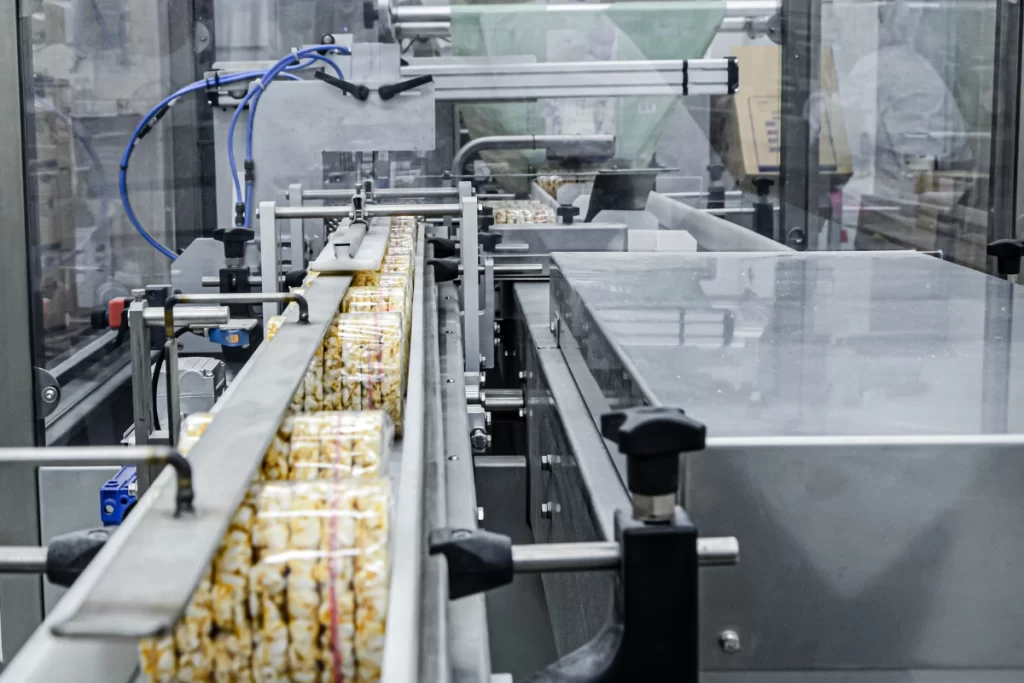Introduction to Xanthan Gum
Xanthan Gum is a versatile and widely-used additive in the food industry, known for its exceptional ability to stabilize, thicken, and emulsify food products. Originating from a simple microbial fermentation process, this polysaccharide has transformed various aspects of food processing and product formulation. It is a product of the bacterium Xanthomonas campestris, which ferments sugars into a substance that turns liquid into a thick, stable solution.
The history of Xanthan Gum traces back to the 1960s when scientists at the United States Department of Agriculture began researching ways to use carbohydrates from various crops. Its discovery opened doors to enhancing food texture and consistency without affecting taste or appearance. As a food additive, Xanthan Gum is appreciated for its ability to maintain homogeneity in food products, preventing ingredients from separating, thus ensuring quality and longevity.
The role of Xanthan Gum in food processing is multifaceted. It is an essential ingredient in gluten-free baking, providing the elasticity and stickiness that gluten typically offers. It also plays a critical role in creating creamy textures in sauces and dressings, enhancing mouthfeel and stability in frozen foods, and improving the shelf life of various products. This adaptability not only makes it a valuable tool for food manufacturers but also a critical component in the development of new and innovative food products.
As consumers increasingly demand healthier and more natural food options, Xanthan Gum serves as a key ingredient in achieving desired textures and consistencies in a range of health-focused products, including plant-based and allergen-free options. This introduction sets the stage for a comprehensive exploration of the vast applications and benefits of Xanthan Gum in the food industry.
The Chemistry Behind Xanthan Gum
The effectiveness of Xanthan Gum as a thickening agent lies in its unique molecular structure. It is composed of a cellulose backbone with side chains of trisaccharides. This structure allows Xanthan Gum to form a gel-like network when mixed with water, which is responsible for its thickening, stabilizing, and emulsifying properties.
When Xanthan Gum is added to a liquid, it rapidly disperses and swells, absorbing water and expanding in volume. This expansion results in the thickening of the liquid, creating a viscous yet flowable solution. One of the unique properties of Xanthan Gum is its pseudoplasticity, meaning it becomes less viscous under shear stress (like stirring or shaking) and returns to its original viscosity once the stress is removed. This property is particularly useful in products like salad dressings and sauces, where a smooth pour is desired, but a stable suspension is needed when at rest.
Moreover, Xanthan Gum is highly tolerant to various temperatures, pH levels, and salt concentrations, making it an incredibly versatile ingredient in complex food formulations. It maintains stability under high heat, which is beneficial for processes like pasteurization and sterilization. Its ability to withstand different pH levels makes it suitable for a range of products from acidic fruit juices to alkaline plant-based milks. The salt tolerance of Xanthan Gum ensures consistent thickening in savory products like soups and meat marinades.
This section highlights the scientific principles that make Xanthan Gum an invaluable ingredient in food processing. Understanding its molecular behavior provides insight into its versatility and guides food scientists in optimizing its use in various applications.

Xanthan Gum in Food Industry: A Versatile Ingredient
In the food industry, Xanthan Gum is hailed for its exceptional versatility, finding applications in a myriad of products ranging from baked goods to dairy products. Its role is multifaceted, serving as a thickener, stabilizer, and emulsifier in different contexts. This adaptability stems from its unique properties which can be tailored to meet specific needs of food processing.
In baking, particularly in gluten-free products, Xanthan Gum provides the necessary binding and structural properties that gluten ordinarily imparts. It helps in maintaining the moisture content, thereby improving the texture and shelf life of baked goods. In dairy products like ice cream and yogurt, it prevents the formation of ice crystals and ensures a smooth, creamy texture.
Xanthan Gum also finds significant use in the production of sauces and dressings. It stabilizes emulsions, ensuring that the oil and water phases do not separate, thus maintaining a uniform consistency. Its ability to withstand varying temperature and pH levels makes it ideal for products that undergo extreme processing conditions.
The use of Xanthan Gum in beverages is another notable application. It enhances the mouthfeel of juices and smoothies, making them more palatable. In alcoholic drinks, it contributes to the stability of the beverage, maintaining the desired consistency and flavor profile over time.
In the realm of health-focused foods, Xanthan Gum aids in creating low-fat, sugar-free, and low-calorie alternatives without compromising on texture and taste. Its role in these products is crucial, as it mimics the mouthfeel and texture of their full-fat or sugared counterparts, making them more appealing to health-conscious consumers.
Xanthan Gum and Food Texture
The influence of Xanthan Gum on food texture cannot be overstated. It is pivotal in achieving the desired consistency, mouthfeel, and appearance in various food products. Its ability to modify the texture of food is harnessed in multiple ways, depending on the product and the desired outcome.
In the realm of sauces and dressings, Xanthan Gum imparts a smooth, viscous consistency, making it ideal for coating and adherence to foods. It also prevents the separation of ingredients, ensuring a homogeneous product from the first use to the last.
In ice creams and frozen desserts, Xanthan Gum plays a vital role in preventing the formation of ice crystals, which can ruin the texture and mouthfeel of the product. It helps in maintaining a smooth, creamy consistency, enhancing the overall sensory experience.
In gluten-free baking, achieving a texture similar to that of gluten-containing products is a significant challenge. Xanthan Gum is instrumental in this aspect, providing the necessary elasticity and stickiness. It helps in retaining moisture, improving crumb structure, and ensuring a pleasant mouthfeel, which are essential characteristics of good-quality baked products.
Even in beverages, Xanthan Gum contributes to a fuller mouthfeel, especially in low-calorie drinks where it can compensate for the lack of body usually provided by sugars or other carbohydrates. It ensures a consistent texture throughout the shelf life of the beverage, making every sip as enjoyable as the first.
Health and Nutritional Aspects of Xanthan Gum
Xanthan Gum not only plays a functional role in food processing but also has implications for health and nutrition. It is a soluble fiber, which can aid in digestion and improve gut health. Unlike some food additives, Xanthan Gum is generally considered safe for consumption and has minimal caloric value, making it a suitable ingredient for low-calorie and weight management diets.
In terms of dietary considerations, Xanthan Gum is gluten-free, making it an essential ingredient in gluten-free baking and cooking. This is particularly important for individuals with celiac disease or gluten sensitivity, as it provides a safe alternative to gluten-containing thickeners and stabilizers.
Furthermore, Xanthan Gum has been studied for its potential health benefits. As a soluble fiber, it can aid in lowering blood sugar and cholesterol levels. It also improves the texture of foods, which can enhance the overall eating experience for individuals with swallowing difficulties or those who require texture-modified diets.
However, it is also crucial to acknowledge that Xanthan Gum may cause digestive issues in some people, particularly when consumed in large amounts. Manufacturers and consumers alike should be aware of the appropriate levels of use to avoid potential adverse effects.
Regulatory Status of Xanthan Gum in Food Processing
The regulatory status of Xanthan Gum in food processing is an essential consideration for manufacturers. In the United States, the Food and Drug Administration (FDA) classifies Xanthan Gum as a generally recognized as safe (GRAS) substance when used in accordance with good manufacturing practices. This designation means that it is legally permitted for use in food products without additional FDA approval.
Internationally, Xanthan Gum‘s use and regulation can vary. However, it is generally accepted in many countries, often with specific guidelines regarding its application in different food products. Manufacturers must be aware of these regulations, particularly if they are distributing products globally.
Labeling requirements are another vital aspect of regulation. In the US, Xanthan Gum must be listed on food labels, providing transparency for consumers who may have allergies, intolerances, or dietary preferences. This requirement ensures that consumers can make informed choices about the products they purchase and consume.
Innovative Uses of Xanthan Gum in Food Processing
The innovative applications of Xanthan Gum in food processing are continually evolving, as manufacturers discover new ways to leverage its unique properties. One emerging trend is its use in plant-based and alternative food products. Xanthan Gum enhances texture and stability in plant-based meats and dairy alternatives, contributing to a more authentic and satisfying sensory experience.
In the realm of molecular gastronomy, Xanthan Gum is a key player. Chefs and food technologists use it to create unique textures and forms, such as foams and gels, that would be difficult to achieve with other ingredients. This innovation not only enhances the dining experience but also expands the culinary possibilities.
Another innovative use of Xanthan Gum is in the production of specialty and functional foods. For instance, in sports nutrition products, it helps maintain the consistency and stability of energy gels and protein shakes. It is also being explored in the development of foods designed for specific health conditions, like dysphagia, where texture-modified diets are necessary.
Challenges and Solutions in Using Xanthan Gum
Despite its versatility, using Xanthan Gum in food processing can present challenges. One of the main issues is achieving the desired consistency without over-thickening, which requires precise measurements and careful experimentation. Overuse of Xanthan Gum can result in an undesirable, slimy texture.
Another challenge is ensuring that Xanthan Gum is evenly distributed within a mixture. Improper mixing can lead to clumping and inconsistent texture in the final product. This is particularly important in large-scale production where uniformity is key.
To address these challenges, manufacturers should adhere to best practices for Xanthan Gum usage. This includes using high-shear mixing to ensure even distribution and starting with lower concentrations, gradually increasing as needed. It’s also important to consider the interactions between Xanthan Gum and other ingredients, as certain combinations can affect the overall texture and stability of the product.
Innovations in processing technology are also providing solutions. Advanced mixing equipment and methods are being developed to optimize the incorporation of Xanthan Gum into various food matrices, enhancing efficiency and consistency in food production.
Sustainability and Production of Xanthan Gum
Sustainability is an increasing concern in the food industry, and the production of Xanthan Gum is no exception. The fermentation process used to produce Xanthan Gum is relatively eco-friendly, as it uses simple sugars and can be carried out using waste products from other industries.
Advances in sustainable production methods are focusing on reducing water and energy usage, and minimizing waste. Biotechnological improvements are also being explored to enhance the efficiency and yield of Xanthan Gum production, further reducing its environmental footprint.
Moreover, the sustainability of Xanthan Gum extends to its role in reducing food waste. By improving the texture and stability of food products, it can extend shelf life, thereby reducing the amount of food discarded by consumers and retailers.
Case Studies: Success Stories in Food Processing with Xanthan Gum
Here are some real-world case studies showcasing successful applications of xanthan gum in different food processing industries:
Salad Dressings Xanthan gum is widely used in salad dressings to provide a thick, pourable consistency and prevent separation of the oil and vinegar phases. A leading brand was able to replace gum arabic with xanthan gum, reducing costs while maintaining the desired texture.
Bakery Products In bread and other baked goods, xanthan gum improves dough handling, increases moisture retention, and extends shelf life. A major bread company used xanthan gum to create softer, more pliable whole wheat bread with improved volume and texture.
Dairy Products Xanthan gum stabilizes proteins and fats in dairy products like milk drinks, yogurts, and cheese sauces. A yogurt manufacturer used xanthan to create a thicker, creamier Greek-style yogurt while reducing protein and fat levels.
Gluten-Free Products Xanthan gum mimics the viscoelastic properties of gluten, allowing gluten-free breads, pastas, and baked goods to have an improved texture and mouth-feel. A major brand incorporated xanthan into their gluten-free bread mix for better rise and crumb structure.
Beverages Xanthan gum provides suspension of particulates, emulsion stability, and a pleasing mouth-feel in beverages. A juice company used xanthan to create a pulpy, refreshing orange drink by stabilizing the fruit solids in suspension.
Sauces and Dressings The thickening and stabilizing properties of xanthan prevent separation and improve cling in sauces and dressings. A condiment producer used xanthan to create a thick yet pourable ranch dressing that clings well to salads.
These case studies illustrate how xanthan gum allows food manufacturers to improve texture, stability, moisture retention and overall quality across many product categories. Its versatile functionality makes it an invaluable ingredient.

Future Perspectives and Potential Developments
Looking towards the future, Xanthan Gum is poised to play an increasingly vital role in food technology. Emerging research points to its potential use in nanotechnology for food processing, such as creating nanoemulsions for better nutrient delivery or developing new food packaging materials.
Another exciting development is the exploration of genetically modified organisms (GMOs) to produce Xanthan Gum more efficiently and sustainably. These advancements could lead to a reduction in production costs and further minimize the environmental impact of its manufacturing process.
Furthermore, the growing interest in personalized nutrition and functional foods presents new opportunities for Xanthan Gum. Its ability to modify food textures and release encapsulated nutrients at specific digestion stages can be pivotal in creating customized food products catering to individual health needs.
Conclusion
Xanthan Gum has established itself as an indispensable ingredient in the food industry, offering remarkable versatility and numerous benefits in food processing. From enhancing texture and stability to contributing to health and nutrition, Xanthan Gum has proven its value time and again.
As we look to the future, the continued innovation and sustainable development surrounding Xanthan Gum are likely to further solidify its role in the ever-evolving food industry. Its adaptability and functional properties make it an essential ingredient for current needs and a promising tool for future challenges in food technology.





